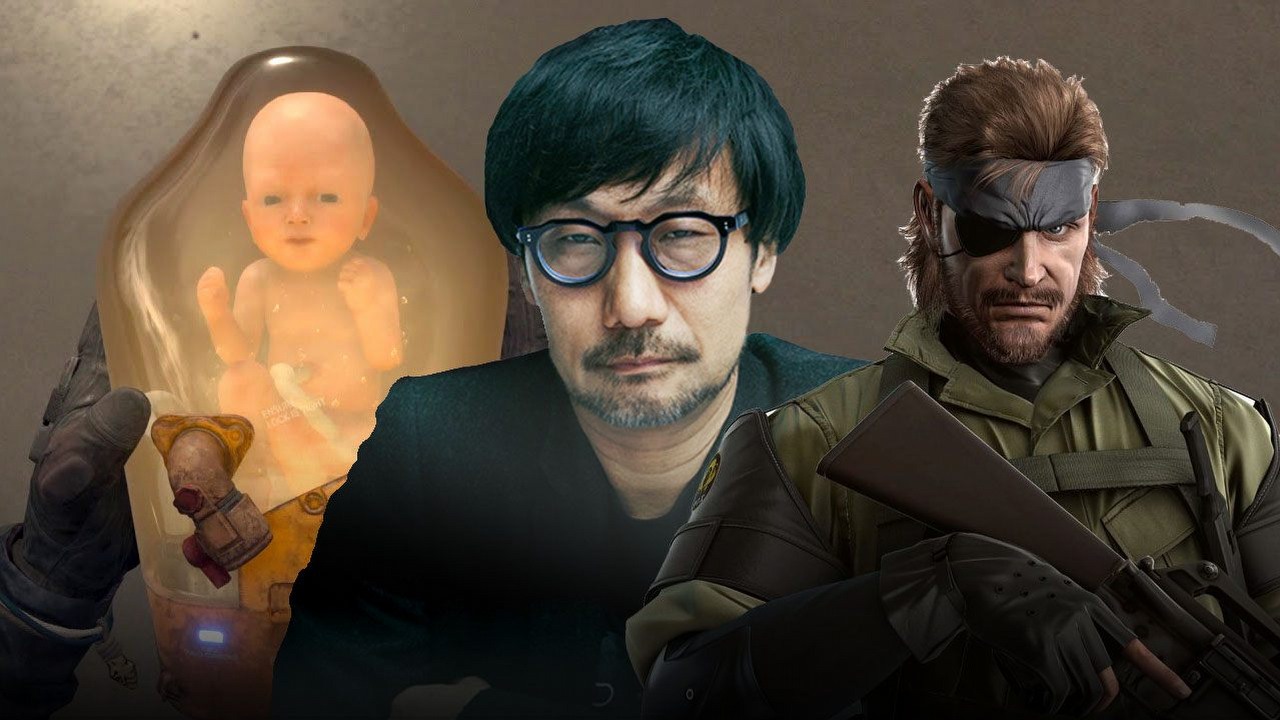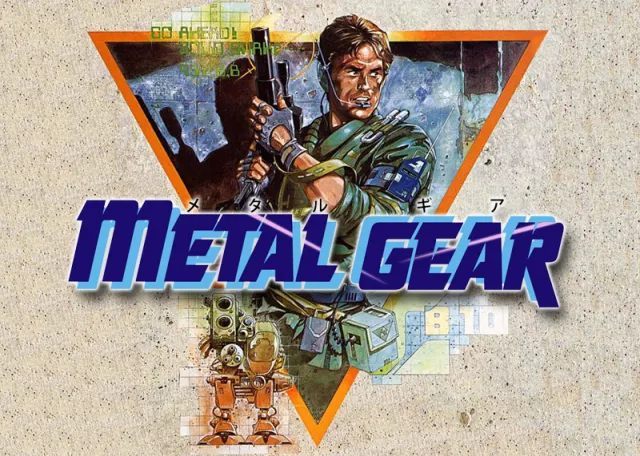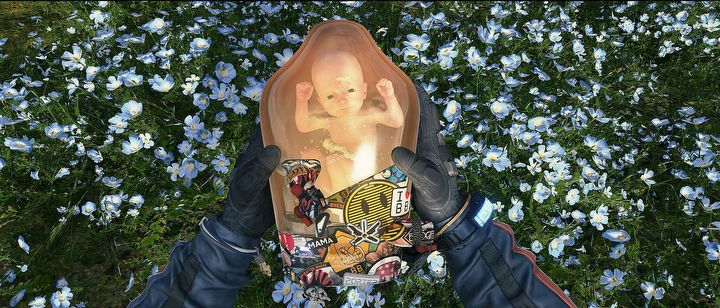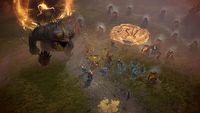Hideo Kojima is a Genius and We Have Evidence
A freak, eccentric, genius and visionary – Hideo Kojima. The talented Japanese developer and filmmaker has already delighted us more than once, using ideas that are not just out there, they're often revolutionary.

Hideo Kojima is famous for his openness. He willingly shares his impressions and often quotes various items of contemporary pop culture. As a creator, he romanticizes the process of designing games, spinning beautiful visions about his original ideas. He has fans all over the world, although some try to deny him the merits and call him a megalomaniac and accusing him of being verbiose. Regardless of your own opinion, Kojima cannot be denied one thing – he's a true visionary, whose projects have always excited gaming aficionados for several decades for a good reason.
The career of the famous Japanese has been uninterrupted since 1986 – during this time, he's made a huge impact on the industry with his most important works. Kojima resembles an eccentric genius who polarizes the gaming community and even his own fans. His marketing campaigns have become legendary. Just like the revolutions and quirky ideas included in his rich catalog of games.
Revolution: Kojima, show me how to stealth
Contrary to the myths, Hideo Kojima didn't invent the stealth genre and its fundamental assumptions, although he was instrumental to establishing it. Throughout his career, he was always strongly attached to stealth mechanics, and he's completed no less than three revolutions in the genre, using military and espionage motifs in a masterful way. The first one happened in 1987 with the original Metal Gear, which could not have been an action game due to hardware limitations. Contrary to the trends of the time, it was a game focused on avoiding enemies, while being more complex than the simpler games designed for con-op machines. Hideo Kojima deconstructed and reinvented stealth games, making them full-fledged products and deepening the experience. The first game in this saga was a great success and, in retrospect, turned out to be a key release that popularized the genre and accelerated its development.

The issue of the birth of stealth games is not so obvious, and the genre itself has a really rich history. Some people quote Shoplifting Boy (Manbiki Shounen) released in 1979 as the first game of this type, in which the crux of the game was actually about avoiding detection. Others mention Castle Wolfenstein released on the Apple II in 1981. In the same year, SEGA launched an arcade game titled 005. This game was the first to offer a visualization of the field of view of opponents, which for many years was a fundamental element of all stealth games on the market. 005 itself was entered in the Guinness Book of Records as the production that initiated the genre. The game allowed sneaking up on enemies from behind or avoiding them, and the goal was to sneak into warehouses and steal secret documents.
Released in 1998, Metal Gear Solid boasts the title of the second 3D stealth game ever (second only to Tenchu: Stealth Assassins, released earlier the same year). Released on the first PlayStation, the game offered unprecedented opportunities for stealth in a three-dimensional environment. This, and a few other factors, led to Metal Gear Solid rightly becoming etched in the rich history of the industry – with golden letters.
Another revolution happened with Metal Gear Solid: Ground Zeroes and no, I don't mean the controversial idea of a paid demo version! But that's not a fair way to look at it, because this fragment of the game turned out to be a much better than the full version of Metal Gear Solid V in several key respects! And this is more a consensus than an opinion.
The deeper we dive into Ground Zeroes, the clearer the design principles of an all-out stealth game become. The slice of the game seemingly void of content offers a lot of it in reality, and it lets you complete missions in countless ways. This is a game that impresses with the details that have a real impact on the actual course of the gameplay. We're talking things like using the topography to gain an advantage over the enemy, or a creatively designed AI of opponents who naturally adjust and adapt to our actions and style of play.
It offers a fabulous balance of openness that promotes stealth gameplay, and at the same time doesn't spoil the overall concept. The game also avoided the problem that really plagued part five, which was too open and thus diluted some of its fundamental assumptions. Ground Zeroes is simply a better-condensed experience, and the game's camp is the perfect sandbox where we can play with opponents for hours in almost countless ways.
Revolution: play the movie, watch the game
Apart from his undeniable contribution to the development of stealth games, Kojima is also (or perhaps primarily) associated with filmmaking, and has become known as a great director. In fact, the running joke is that in his games, we spend more time watching cut scenes than playing. Metal Gear Solid 4: Guns of the Patriots has a total of eight hours of cutscenes, the longest of which lasts entire 71 minutes, which allowed it to enter the Guinness Book of Records.
Ideas from the cinema have been spilling into video games for years, which often strive to achieve the greatest cinematic quality attainable. Game developers eagerly reach for these elements and use a similar narrative convention to tell deeper and more emotionally resonant stories. Here, the creators achieve various levels of success, but one of the pioneers is Hideo Kojima. Of course, we are talking about the directing – writing is a completely different cup of coffee.
Kojima's twitter includes a short bio: "Game developer: 70% of my body is made of movies." He's an enthusiast, who stays very close to the world of cinematography. Kojima is also a good friend of Nicolas Winding Refn, Guillermo Del Toro, or enjoys good relationship with Koduri Rajamouli. He's also acquainted with many well-known individuals responsible for shaping the cinema of today, so he's a valid and quite prominent member of the film industry.
And without that, he clearly established himself as a movie buff who unleashes his love of cinema in his own games. His 1988 Snatcher is a cyberpunk graphic adventure strongly inspired by the iconic Blade Runner. Just in Ridley Scott's famous film, the player has to investigate and track down androids that infiltrated the human society.
The next major title was 1994's Policenauts. In this case, we got a cinematic story in the form of an incredibly stylish anime with clearly marked elements of political fiction. The game also included early ideas for some of the most characteristic narrative devices later found in Metal Gear Solid. For example, it offers an extensive commentary on the reality presented in a distorting mirror – for example, Policenauts was inspired by the public debate on transplant ethics.
Kojima values filmmaking and equates it with creative freedom. Consequently, with Policenauts, he pondered on the human condition and the impact of space colonization on the functioning of society. He was fascinated by the idea of the potential effects of prolonged stay in space on the human body and mind. He tried to predict what aspects of our personality would be revealed if our society would leave the homeworld.
In the end, Metal Gear Solid itself, despite the limitations of the first PlayStation, impressed with the direction of cutscenes. You can see it in the way the camera operates and hear it in the voice acting. The cinematic exposition seamlessly mingles with gameplay, creating a unique, fresh and captivating combination. An engaging script and complex characters were forever engraved in the minds of millions of players. It was not only a good game, but also a suspenseful and incredibly complex political thriller. Kojima created a highly influential product, a phenomenon that's still debated on. It will not be an overstatement to assume that the cinematic nature of the first MGS blazed a trail for the creation of games such as The Last of Us.
Quirk: player outplayed by game
An important element of Hideo Kojima's image is his sense of humor. He has became known as an amusing person who's able to separate his work from himself. He loves purely comedy motifs, which can sometimes be even absurd and deliberately kitschy. At the same time, he's very based, and full of creative ideas, which he often implements in a way that's not entirely serious. After all, he's a person who has repeatedly blown minds. A perfect example confirming this is again the first and groundbreaking Metal Gear Solid.
The humorous breaking of the fourth wall is a procedure that we often encounter in Hideo's games. For example, characters in Metal Gear Solid talked about the PlayStation system and the requirement to change the disc. It even happened that cunning, desperate opponents tried to persuade the player to turn off their consoles. Hideo himself even made guest appearances in Peace Walker and The Phantom Pain, where we could recruit him into our personal army. Death Stranding's Sam Porter Bridges was also aware of the player's agency, and he could attack the camera if we stared at his crotch for too long.
Boss fights were an important element of MGS , and the most memorable was, of course, the creative duel with Psycho Mantis. This powerful telepath could read our minds and, by "looking" into the console's memory card, recognized the games we had played. He proved his supernatural abilities by making the DualShock controller vibrate. In the end, to outsmart and defeat the opponent, the player had to reconnect the controller to the other slot. This is a great example of not only breaking the fourth wall, but going outside it, blurring the boundaries between the real world and the game for a short while. This is the result of unconventional thinking, which translated into unique features and themes that simply surprised the unaware players.
Psycho Mantis is the best-known and most-cited example of Kojima's ingenuity, but similar solutions have been used in many of his games. It's impossible to list them all, but the sniper duel with The End in MGS3 stands out. If the elderly shooter caused you too much trouble, all you had to stop playing the console for a week (or reprogram its clock in the settings). After a certain amount of time, the opponent simply died of old age. Only video games allow for such things, and Kojima is one of the most creative people in the biz when it comes to using them. When facing these solutions for the first time, it's difficult to contain sincere admiration for the obscure ingenuity of the creator.
Revolution: Learn to walk again
There were attempts to depreciate Death Stranding as a "courier simulator," discrediting the main idea of the game and reducing it to boring exploration on foot. Unfortunately, many players seemingly believed these negative opinions and never really tried to play the game. I myself have fallen into these snares, and I believed for a while that this wasn't a game for me either. Nevertheless, I followed and appreciated the story of rapid development of this project. It takes genuine boldness to set up your own studio in no time, find a big publisher like Sony, and then sell the idea of creating a great AAA game with a formula that seems inaccessible to regular players.
I don't know if anyone else would be able to convince the biggest publishers to invest millions in a mega-production with a star cast, whose core gameplay is actually based on walking and delivering packages to various corners of an extremely eccentric (for many simply incomprehensible) world. On the surface, it didn't even seem a risky investment – it seemed completely crazy in economical terms. The phenomenon, however, was in the details, which turned such a simple and obvious activity as walking into a truly engaging adventure.
Death Stranding is, next to the niche Gravity Rush, my favorite example of a game that's fundamentally open-ended, in which gameplay mechanics based on an unusual way of moving benefit greatly from the structure of the world. Kojima went back to the absolute basics and looked at walking, which most players don't even pay attention to – it's the kind of mechanic that doesn't make you think – unless it's broken or poorly executed. In the case of Death Stranding, it became one of the key elements of the experience. Kojima taught us how to walk again.
Therefore, exploration in Death Stranding harmonizes with the economic aspect of expeditions. We have to take care of the weight and distribution of the load. It's important to balance the body and choose the optimal path to the goal, taking into account potential threats and the topography. During the journey, we use various climbing equipment, such as ladders and ropes – allowing us to reach seemingly inaccessible places. Even the footwear of the main character plays a part, as we may get injured on the sharp rocks or stumble in uneven terrain. Sure, a few things have been simplified a lot (such as body balance, which can be extremely facilitated), and when roads are built and vehicles are unlocked, some of these elements no longer matter. Nevertheless, in key moments, the main theme of Death Stranding works perfectly and translates into a unique experience, during which overcoming difficult terrain on foot becomes a nice motivator. Being a skeptic myself, I quickly bought this convention to eventually spend over 100 hours with the game, having so much fun just walking around.
Quirk: a fetus in a jar
Writing about Kojima's creative oddness, it's impossible to ignore his quirks. The unconventional design of this creator often takes unexpected directions. Again, it's worth quoting Death Stranding, inspired by the short story by Kobo Abe entitled The Rope. So, among the game's leitmotifs were the primal tools accompanying humanity from almost the beginning of its existence – a stick to keep danger at bay and a rope to keep important things close.
Hideo Kojima has many quirks to his credit, and one of them is the Boktai series. This adventure RPG was released on GameBoy Advance and told the story of humanity living in a world plunged into darkness. We played the role of one of the vampire hunters, who fought using a gun called Gun Del Sol. Boktai: The Sun Is in Your Hand was distributed on a special cartridge equipped with a photometric light intensity sensor. This game was characterized by an unconventional approach to gameplay and encouraged spending sunny days outside. The cartridge used the UV sensor to charge the weapon in the game. This made combat much easier and was extensively used during boss fights.
You can break Hideo Kojima's last game down into prime factors, and practically each of them contains something strange. It is, after all, a game with a story revolving around the BB – a fetus locked in a jar, with which the protagonist is connected by an artificial umbilical cord. This again can be seen as a metaphor for the rope, which perfectly harmonizes with the nature of the bond that the player and the main character establish with BB during subsequent events, all the plot and narrative nuances aside. The fetus from Death Stranding is directly applicable to gameplay and serves as a useful piece of equipment. It reacts to threats and allows the hero to see supernatural things. We have to take care of it and even calm it down by rocking the artificial womb.
There's also a social aspect here, and even that had to be implemented in an unusual way, defining a new genre of strand games, according to the developer. The applied psychology of the crowd makes us naturally repeat the actions performed by other players, although we never make direct contact with them. Connecting individual hubs to the network, constructions of other players popping up after expanding the influence of the game's version of internet, or finally the ubiquitous and well-known social-media likes – all this is designed to boost serotonin, which makes us more involved in social activities in the game.
Don't you see anything strange about it? So, this complex network of interactions also encompasses pissing mechanics. Urinating several times in the same spot causes mushrooms to grow, which are visible to other players. If enough people grown them in the same spot, individual mushrooms will grow into a whole colony inhabited by edible worms that restore health. I love how this absurdity is consistent with the idea for the setting, and at the same time I want to ask absolutely no questions about it. Visionaries are capable of truly bizarre feats.
2

Author: Sebastian Kasparek
Feels most comfortable in the editorials section at GRYOnline, and sometimes he also writes reviews. A fan of all kinds of culture, who reaches for works from both the top and the bottom shelf. He likes to immerse himself in niche games and productions that are hard to define unequivocally. Appreciates an analytical and critical approach when dealing with cultural works. Prefers unique, strange, visually crazy games that boldly tackle more interesting narrative issues. Addicted to high-octane productions, fighting games, big robots and arcade. Huge fan of Grasshopper Manufacture studio. He likes to catch up on forgotten "hidden gems" from years ago, especially from Japan. Interested in games and the people behind them. Strongly addicted to cinema. A huge fan of Mads Mikkelsen and Takeshi Kitano. He also loves Inio Asano's manga and Tsutomu Nihei's aesthetics.
Latest News
- Need help with “Italian New Year’s dish” in Cookie Jam? Here’s the answer you’re looking for
- Stuck on “A popular US veggie served on New Year’s” in Cookie Jam? Here’s the answer
- Meaningful decisions through limited choice. How the devs behind Tiny Bookshop were inspired to design their hit cozy game
- The hidden details behind V and David’s very different downfalls in Cyberpunk 2077 and Edgerunners
- „They're a bit outdated.” Baldur's Gate 3 director warns those who want to „prepare” for Divinity by playing older installments







